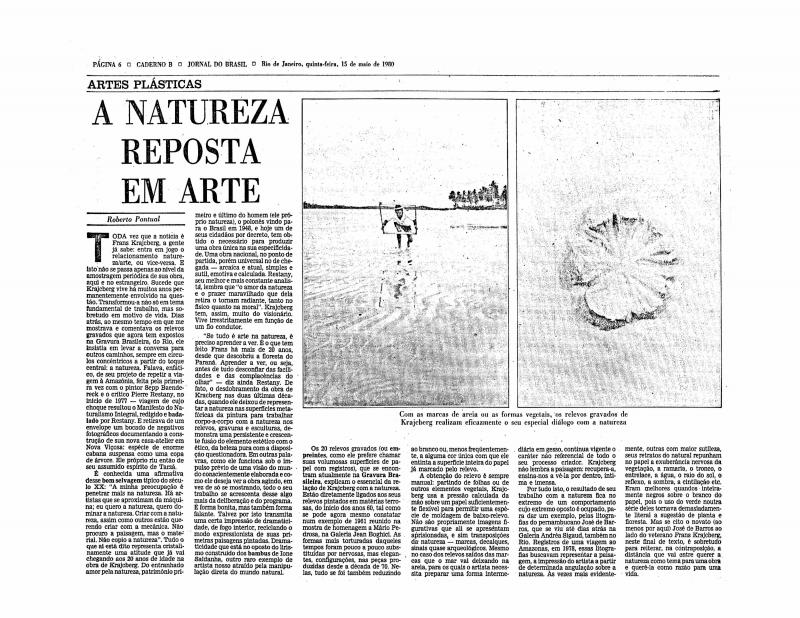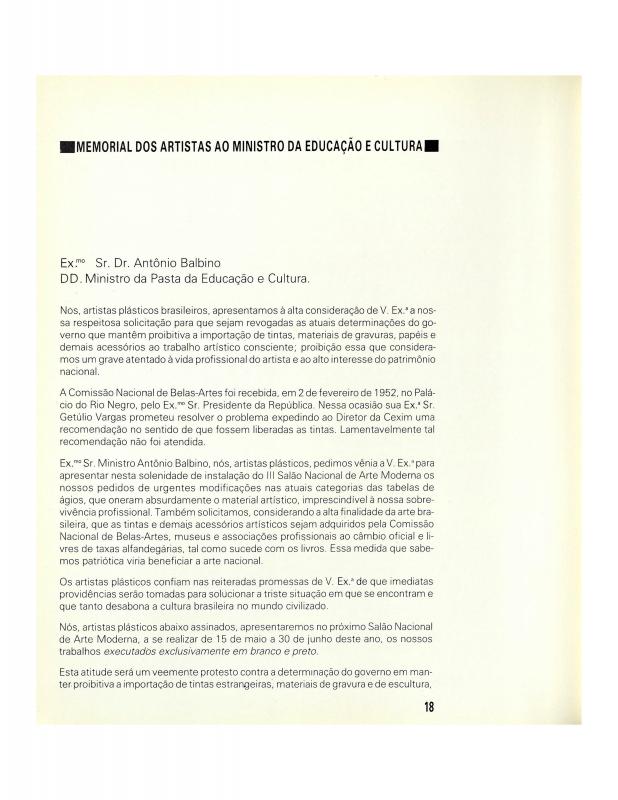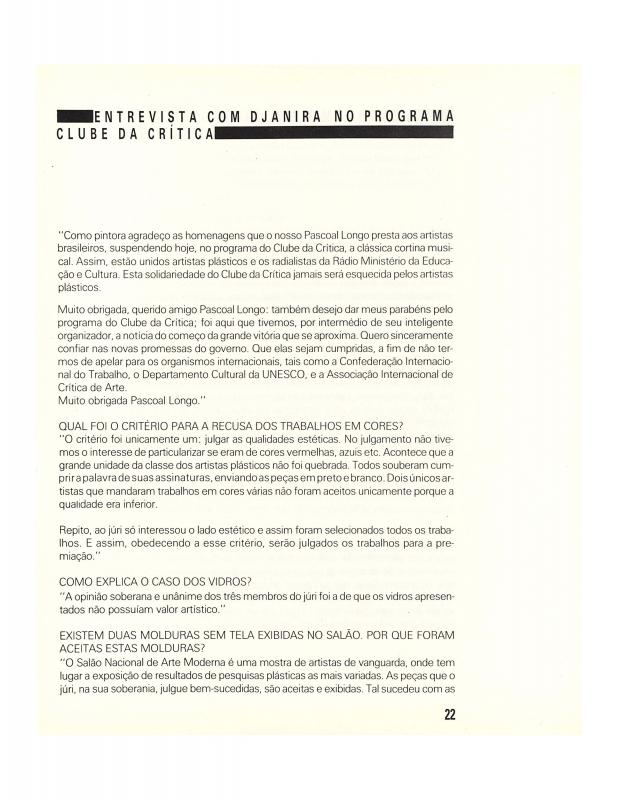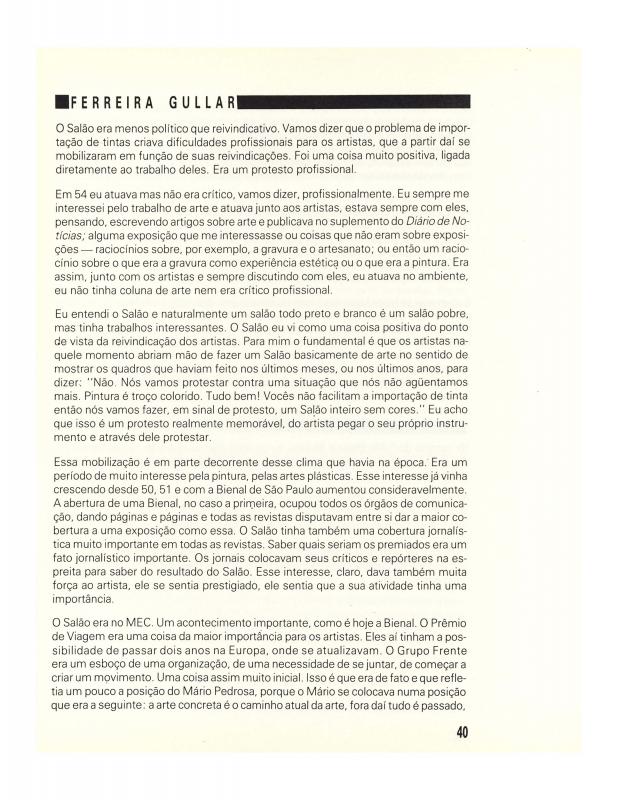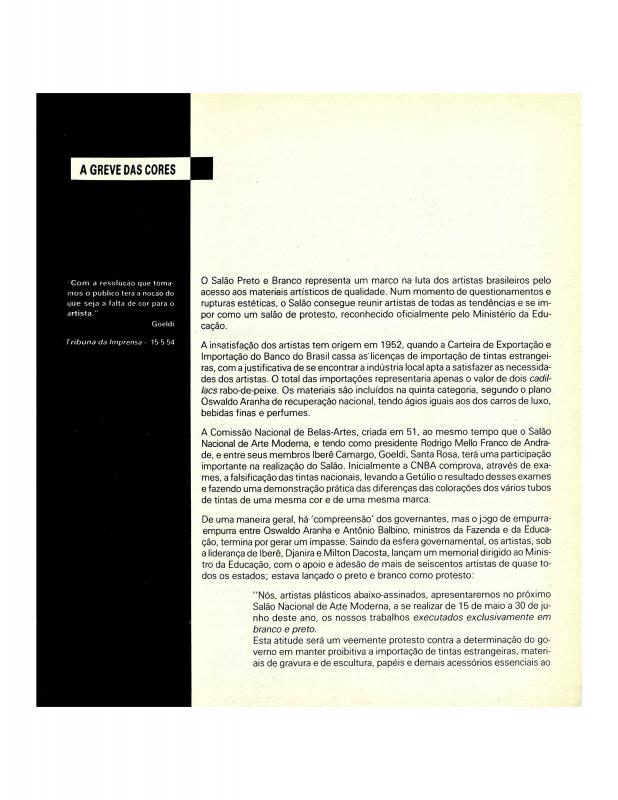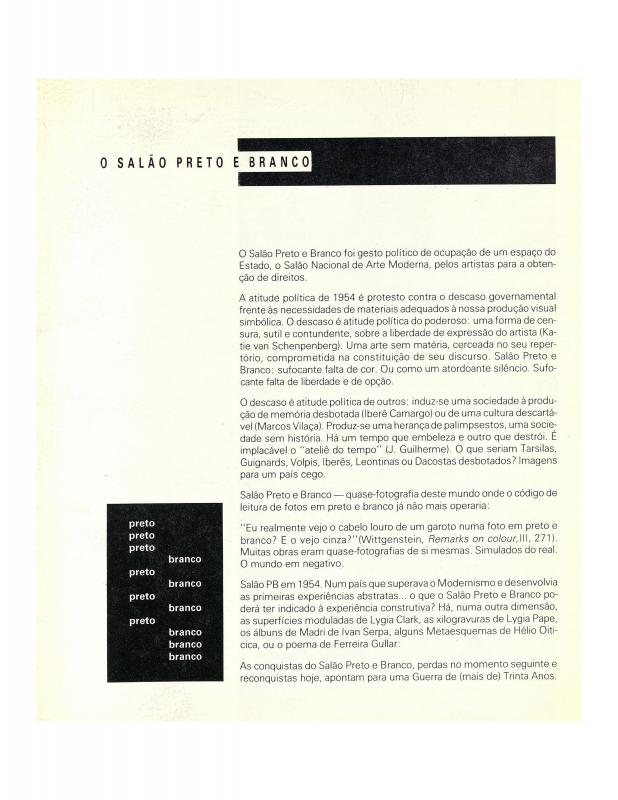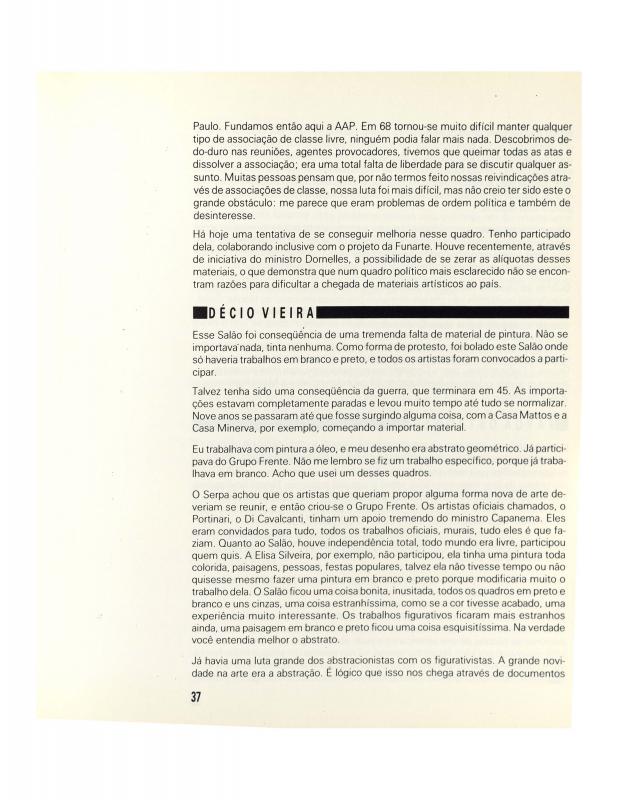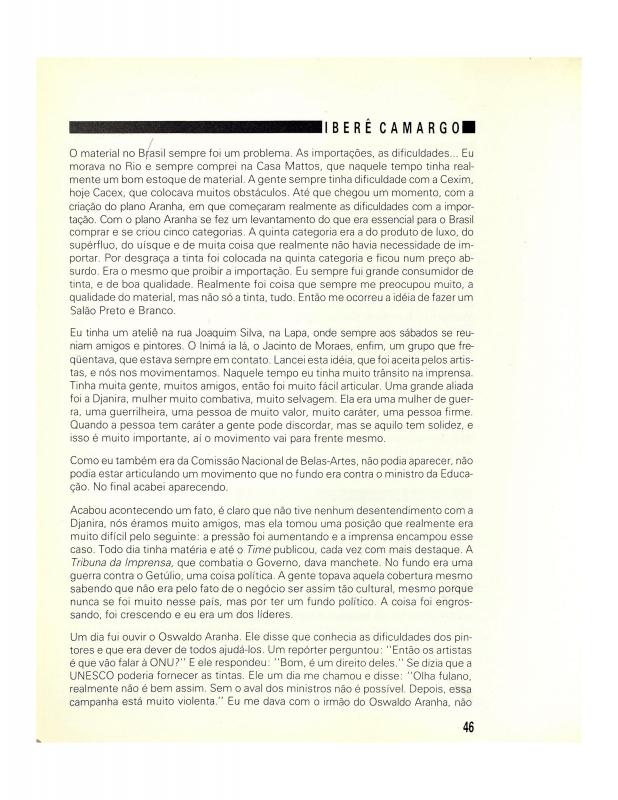Ione Saldanha (1921–2001) was born in the state of Rio Grande do Sul. In 1948 she started studying under the painter Pedro Luiz Correia de Araújo (1874–1955) in Rio de Janeiro; her training was influenced to some extent by the École de Paris. Her first figurative works reflected her interest in Geometric Abstraction and the work of Henri Matisse. She lived in Europe from 1951 to 1953, then returned to Brazil. The second Bienal de São Paulo (1953) included works by the European artists Georges Braque, Pablo Picasso, Fernand Léger, and Paul Klee. “The bienal had an impact,” she recalls in her testimony. “There may never have been such a rare exhibition anywhere else in the world.” Saldanha exhibited her work at the Petite Galerie, Rio de Janeiro (1956) and in the traveling exhibition Arte Brasileira (1959). In 1965 she started experimenting with materials, form, and color, eschewing the traditional support in favor of wooden planks, coils, and lengths of bamboo. Her works consisted of vertical strips (sections of canvas) that were placed on floors or walls to create abstract compositions. Saldanha took part in several São Paulo biennials and showed her work at group exhibitions in Buenos Aires and Asunción (1966), Houston and London (both in 1967), Medellín (1970), and New York (1971). Her works were included in major group exhibitions, including Tradição e Ruptura (1984), Modernité: Art Brésilien du 20ème Siècle (1987), and Bienal Brasil Século XX (1994).
[For complementary reading about Ione Saldanha, see “A natureza reposta em arte” by Roberto Pontual (doc. no. 1111359); “A inteligencia neoliíica na pintura de Ione Saldanha” (doc. no. 1306692); “Ione Saldanha” (doc. no. 1305071); and “O Longo Caminho de Ione Saldanha” by Francisco Bittencourt (doc. no. 1305414).]
Saldanha’s recollections (and those of other participating artists) appear in the book A Arte e seus materiais: Salão Preto e Branco, 3º Salão Nacional de Arte Moderna, 1954 (Art and its Materials: Black and White Salon, Third National Modern Art Salon, 1954), published on the occasion of the 1985 exhibition at the Galería Especial del Salão Nacional de Artes Plásticas. According to the book, the situation recalled the famous Black-and-White Salon of 1954 in which works by Camargo, Aluísio Carvão, Anna Letycia, Aldo Bonadei, Ivan Serpa, Lygia Clark, Maria Helena Andrés, Maria Leontina, Tarsila do Amaral, Ubi Bava, and many others were shown. The publication includes primary and secondary sources that refer to the 1954 exhibition, as well as interviews with contemporary artists and critics.
[For complementary reading on the subject of the Salão Preto e Branco (Black-and-White Salon), see: “Memorial dos artistas ao Ministro da Educação e Cultura” (doc. no. 1307648); “Mensagem do Ministro da Educação e Cultura ao artistas” (doc. no. 1307663); “Entrevista com Djanira no programa clube da crítica” by Pascoal Longo (doc. no. 1307678); “Depoimentos: Aluísio Carvão” (doc. no. 1307694) and “Depoimentos: Ferreira Gullar” (doc. no. 1307732) by Glória Ferreira and Luiza Interlenghi; “A greve das cores” by Glória Ferreira (doc. no. 1307631); “O Salão Preto e Branco” by Paulo Herkenhoff (doc. no. 1307599); and five testimonials conducted by Luiza Interlenghi: “Depoimentos: Décio Vieira” (doc. no. 1307712); “Depoimentos: José Silveira D’Ávila” (doc. no. 1307791); “Depoimentos: Sérgio Camargo” (doc. no. 1307831); “Depoimentos: Ubi Bava” (doc. no. 1307851); and “Depoimentos: Iberê Camargo” by Evelyn Yoschpe (doc. no. 1307754).]

